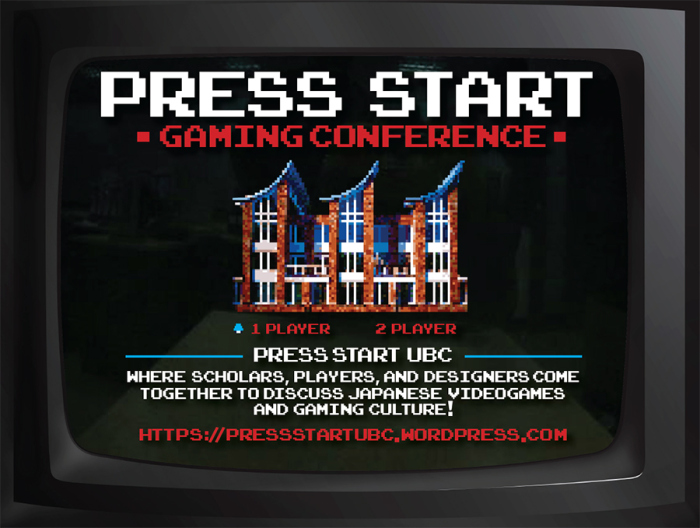British Columbia is a strategic location for the video game industry. Located on the Western coast of the continent, the local provincial government offers competitive tax breaks to incite companies to establish in studios in the region to take advantage of the local talent. With business ties with other video game centers in the region like San Francisco and other locations in California, the province, and Vancouver in particular, has grown to become the second largest industry hub in Canada. Investment from Japan is responsible for a large part of this development.
In light of the recent establishment of Bandai Namco in Vancouver, the University of British Columbia and the Center of Japanese Research hosted the conference Press Start: Culture, Industry, and Innovation in Japanese Gaming this February. Gathering presenters from both academia and the industry, this two-day event provided an overview of the history and the current situation of the Japanese video game industry. University of Alberta Professor Geoffrey Rockwell and I were invited to talk about our own research on the history of Japanese gaming, namely on the Famicon, Pachinko and game centers while my colleague Tsugimi Okabe had the occasion to present her research on female game developers in Japan. Conference attendees massively brought the conversation online, making it possible to find good summaries of papers here and here.
The conference was a good opportunity to understand just how dominant mobile gaming is in Japan and how this popularity has shifted the industry’s priority around those game at the expense of traditional console-based products. Amongst the SEGA, Capcom and Bandai Namco representatives present at the conference, Atsuo Nakayama, the Vice President and Studio Manager of Bandai Namco Vancouver, explained this situation well in various panels and the launch of his book The Third Wave of Japanese Games. The mobile gaming industry started in 2007 in Japan, but it is not before 2010 that it grew to overshadow the traditional game industry. With the advent of mobile gaming came a new business model based on short term development and a focus on analytics, allowing studios to understand their fan base and upgrade their products on a constant basis. This comes as a solution to the declining and time-consuming console business model which Japanese studios traditionally use, and explains why Japanese studios migrate capital in this new form at the expense of others. While this comes as a good solution for the industry, it also underlines some issues relative to product forms and business models: why are Japanese companies reluctant to “play” with those traditional business models anymore? Rather, it seems that the industry only relies on those two models.
While the success of Japanese mobile games such as Puzzle and Dragons, Sonic Dash and Rage of the Behemoth were celebrated, the conference was also the opportunity to look at some of the challenges that the industry is facing. Most of those problems pertain to Japan’s isolation in the culture of mobile game, something that was identified multiple times as the “Galapagos syndrome”. Japanese mobile game successes are difficult to translate outside the country. For example, while Finish or American mobile games generate revenues all across the globe in different markets (the Finish market hardly generates any in its own country), games like Puzzle and Dragons, by far the most successful mobile game in Japan, generate around 95% of its revenues in Japan despite being released in English markets. With the constant aging of Japan’s population, this level of user distribution is seen as alarming for the future of the industry. The main challenge in mobile gaming is now to understand how to either market products better outside Japan or directly design games for the foreign markets using studios established outside Japan. The presence of Bandai Namco and Capcom in Vancouver, as well as the University of British Columbia’s cooperative program in game design are all initiatives seeking to provide solutions.
As a concluding note, it needs to be underlined that some criticism were made towards mobile gaming during the conference. It was mentioned by the crowd and some panelists that the types of game often designed are sometimes less appealing than console games and often rely on some users’ compulsive habits rather than on a compelling “fun factor”. It is true that mobile games in their current form do not have such good press amongst the core gaming culture, but the level of innovation and international collaboration presented at the University of British Columbia left me with the sense that we should expect even better game design from the mobile scene in years to come.


